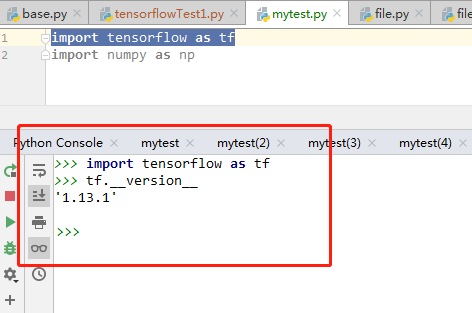参考Tensorflow中文网(http://www.tensorfly.cn/tfdoc/get_started/introduction.html) ,写一个入门.
1.打开pyCharm,新建一个py文件,
import tensorflow as tf import numpy as np
2.然后静等pyCharm安装好 tensorflow和numpy
3.然后控制台查看一下,是否装好.
import tensorflow as tf tf.__version__

4.代码copy过来
import tensorflow as tf import numpy as np # 使用 NumPy 生成假数据(phony data), 总共 100 个点. x_data = np.float32(np.random.rand(2, 100)) # 随机输入 y_data = np.dot([0.100, 0.200], x_data) + 0.300 # 构造一个线性模型 # b = tf.Variable(tf.zeros([1])) W = tf.Variable(tf.random_uniform([1, 2], -1.0, 1.0)) y = tf.matmul(W, x_data) + b # 最小化方差 loss = tf.reduce_mean(tf.square(y - y_data)) optimizer = tf.train.GradientDescentOptimizer(0.5) train = optimizer.minimize(loss) # 初始化变量 init = tf.initialize_all_variables() # 启动图 (graph) sess = tf.Session() sess.run(init) # 拟合平面 # for step in xrange(0, 201): # 在Python 3中,range()与xrange()合并为range( )。 for step in range(0, 201): sess.run(train) if step % 20 == 0: print(step, sess.run(W), sess.run(b))
# 得到最佳拟合结果 W: [[0.100 0.200]], b: [0.300]